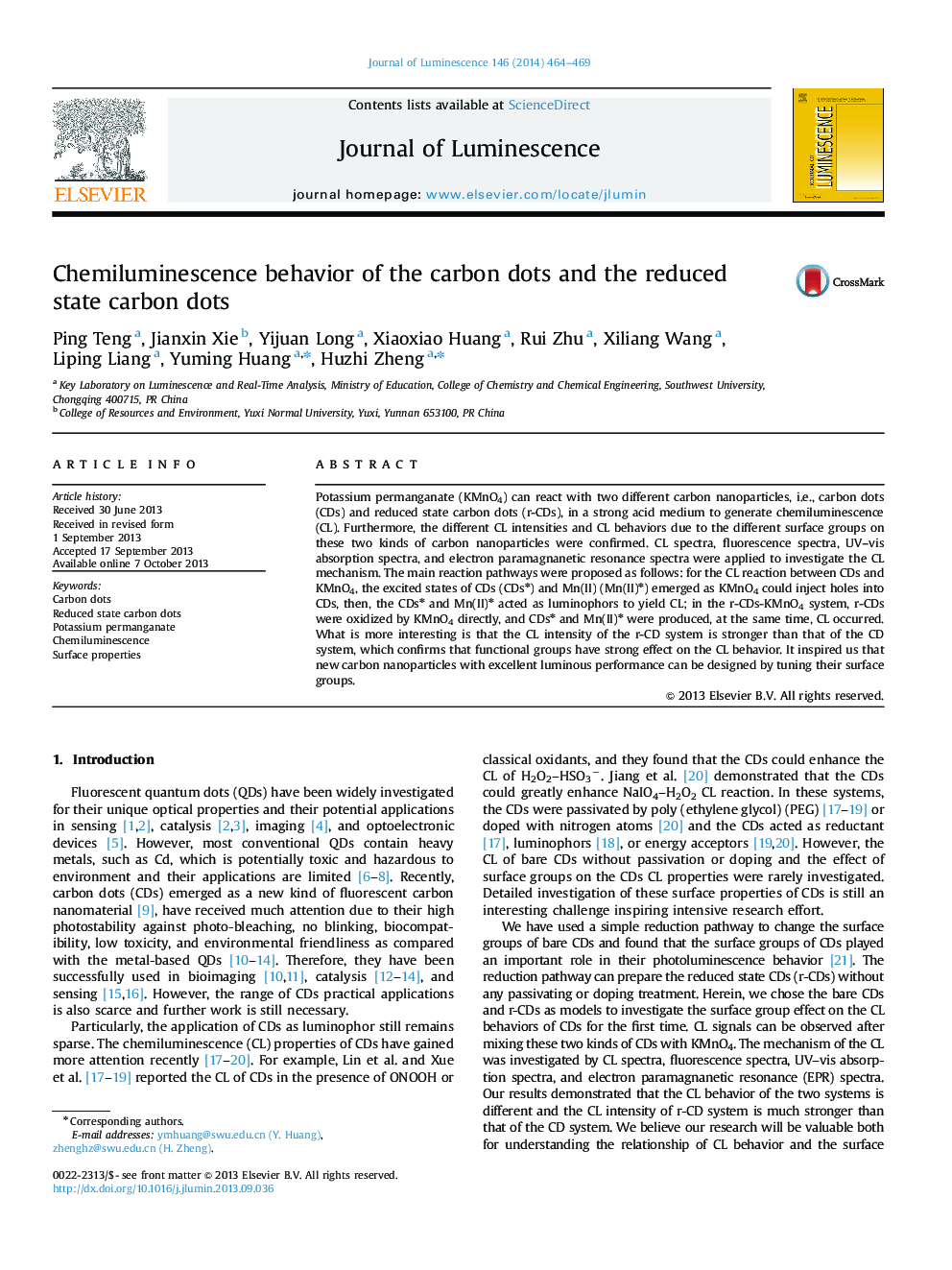| Article ID | Journal | Published Year | Pages | File Type |
|---|---|---|---|---|
| 5400370 | Journal of Luminescence | 2014 | 6 Pages |
Abstract
Potassium permanganate (KMnO4) can react with two different carbon nanoparticles, i.e., carbon dots (CDs) and reduced state carbon dots (r-CDs), in a strong acid medium to generate chemiluminescence (CL). Furthermore, the different CL intensities and CL behaviors due to the different surface groups on these two kinds of carbon nanoparticles were confirmed. CL spectra, fluorescence spectra, UV-vis absorption spectra, and electron paramagnanetic resonance spectra were applied to investigate the CL mechanism. The main reaction pathways were proposed as follows: for the CL reaction between CDs and KMnO4, the excited states of CDs (CDsâ) and Mn(II) (Mn(II)â) emerged as KMnO4 could inject holes into CDs, then, the CDsâ and Mn(II)â acted as luminophors to yield CL; in the r-CDs-KMnO4 system, r-CDs were oxidized by KMnO4 directly, and CDsâ and Mn(II)â were produced, at the same time, CL occurred. What is more interesting is that the CL intensity of the r-CD system is stronger than that of the CD system, which confirms that functional groups have strong effect on the CL behavior. It inspired us that new carbon nanoparticles with excellent luminous performance can be designed by tuning their surface groups.
Related Topics
Physical Sciences and Engineering
Chemistry
Physical and Theoretical Chemistry
Authors
Ping Teng, Jianxin Xie, Yijuan Long, Xiaoxiao Huang, Rui Zhu, Xiliang Wang, Liping Liang, Yuming Huang, Huzhi Zheng,
